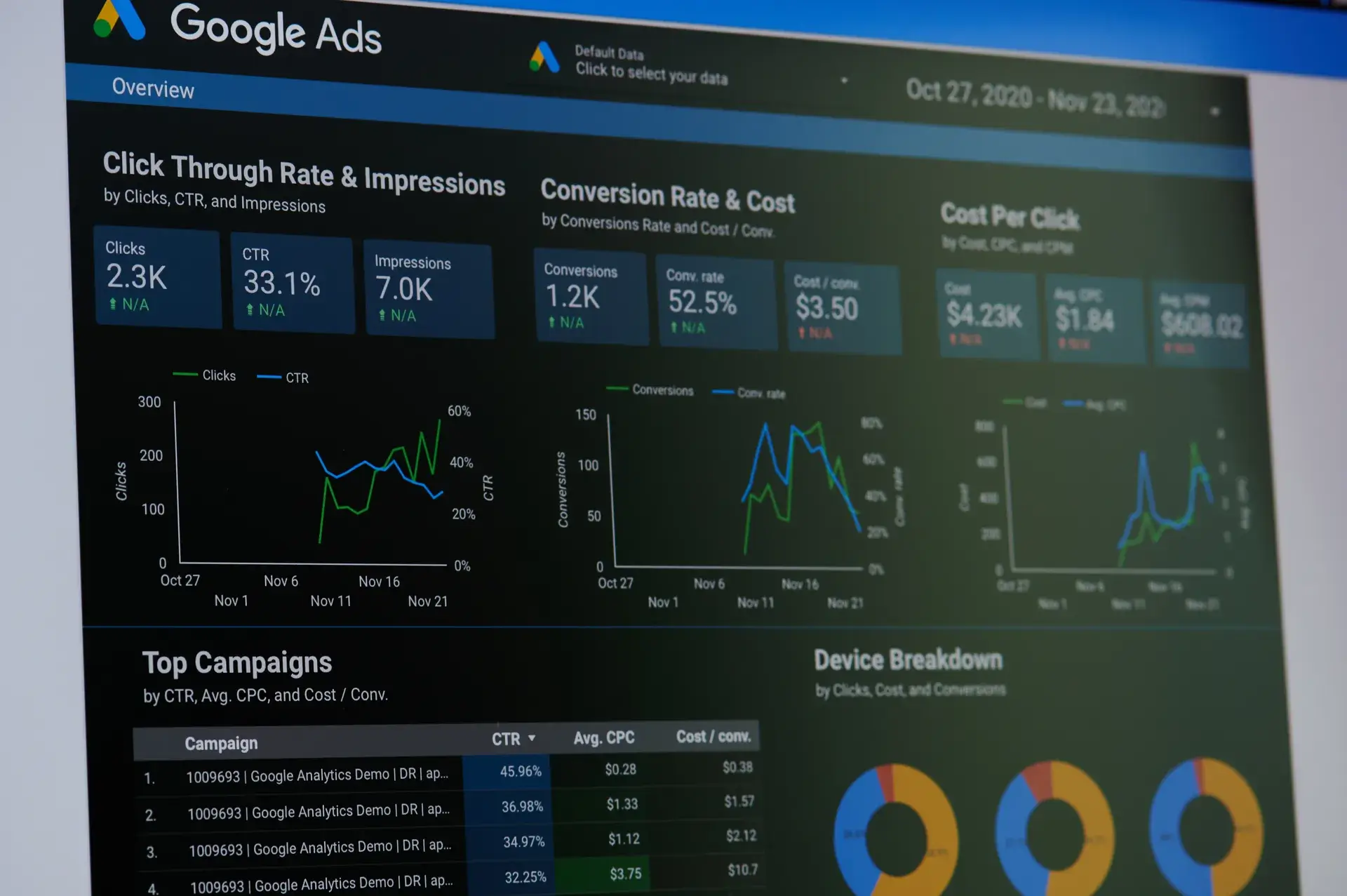In the competitive digital marketing landscape, understanding Google Ads metrics is essential for businesses in Cape Town. This guide will help you navigate the various metrics that are crucial in evaluating the performance of your Google Ads campaigns. From click-through rates (CTR) to conversion rates, we’ll explain what these metrics mean and how you can use them to improve your ad strategy.
Why Google Ads Metrics Matter
Google Ads metrics provide insights into how your ads are performing, allowing you to make data-informed decisions. Tracking these metrics can help you:
- Optimize Ad Spend: Identify which ads are yielding the best return on investment.
- Improve Targeting: Monitor audience segments that respond positively or negatively to your ads.
- Enhance Campaign Performance: Make adjustments based on performance data to boost overall effectiveness.
Key Google Ads Metrics to Track
1. Click-Through Rate (CTR)
CTR measures the percentage of users who click on your ad after seeing it. A higher CTR indicates that your ad is attractive and relevant to your audience.
- How to Improve CTR: Test different ad copy and designs, focusing on compelling calls to action.
2. Conversion Rate
This metric shows the percentage of users who complete a desired action after clicking your ad, such as making a purchase or filling out a form. A high conversion rate means your landing page is effective.
- How to Boost Conversion Rate: Ensure your landing page matches the ad's message and provides value to the user.
3. Cost per Click (CPC)
CPC is the amount you pay for each click on your ad. Keeping your CPC low while maintaining high-quality ads is crucial for maximizing your budget.
- How to Lower CPC: Use keyword optimization and targeted ad placements to improve your ad quality score.
4. Quality Score
This Google metric rates the quality and relevance of your ads and keywords. Higher Quality Scores can lower your CPC and improve your ad placement.
- How to Enhance Quality Score: Focus on relevancy in your ads, keywords, and landing pages for better user experience.
5. Impressions
This metric indicates how often your ads are shown to users. High impressions with low clicks could suggest issues with ad relevance or appeal.
- How to Increase Impressions: Expand your keyword reach and consider using broad match types while ensuring relevance.
Using Metrics to Drive Performance
By regularly reviewing and analyzing these metrics, businesses in Cape Town can refine their Google Ads strategies to achieve better outcomes. Analyzing trends over time will help you adapt to changing audience preferences and behaviors.
Conclusion
Success in Google Ads hinges on understanding and leveraging metrics effectively. As the digital landscape in Cape Town continues to evolve, staying informed about the performance of your campaigns will set your business apart. At Prebo Digital, we specialize in Google Ads management tailored to your specific needs, ensuring you get the most out of your advertising budget. Contact us today to learn how we can help you optimize your Google Ads performance!





